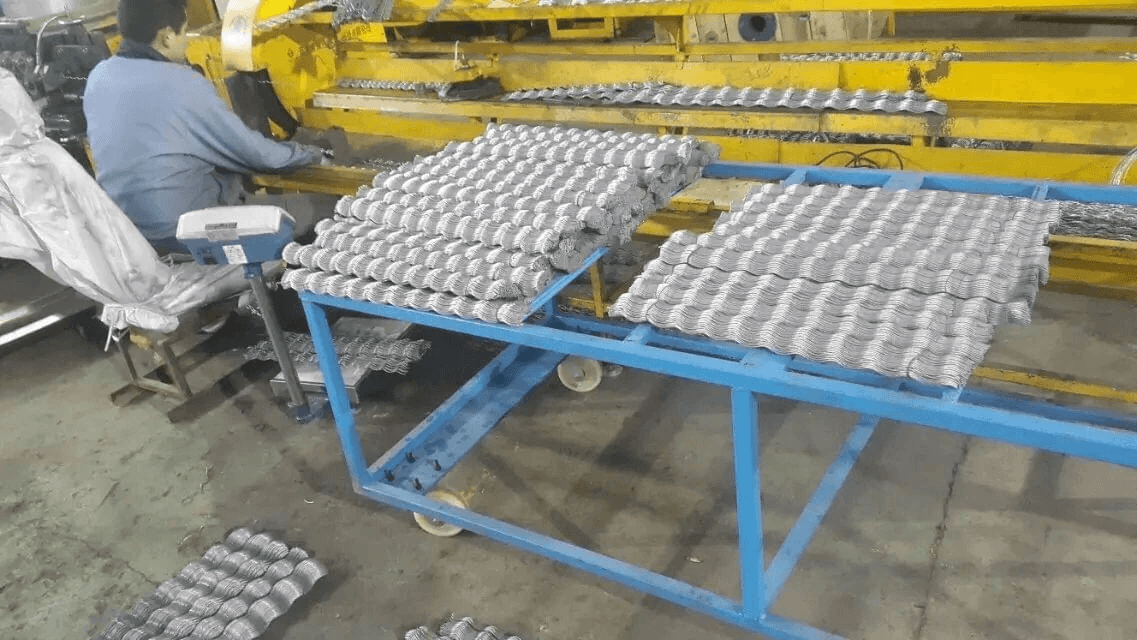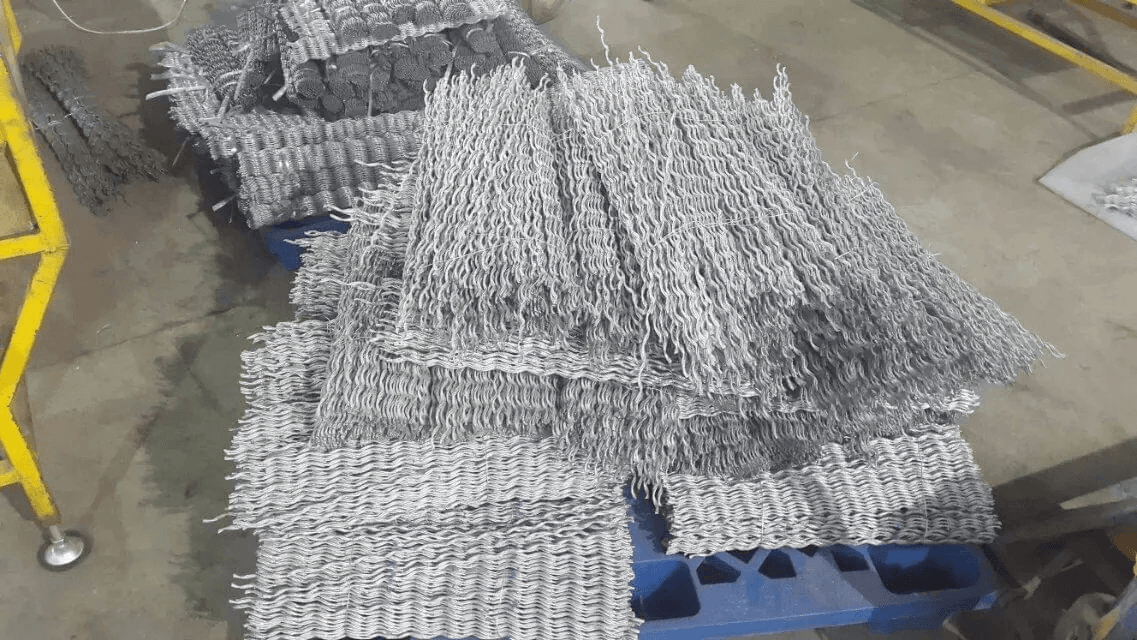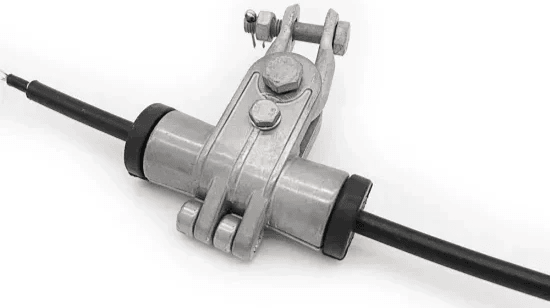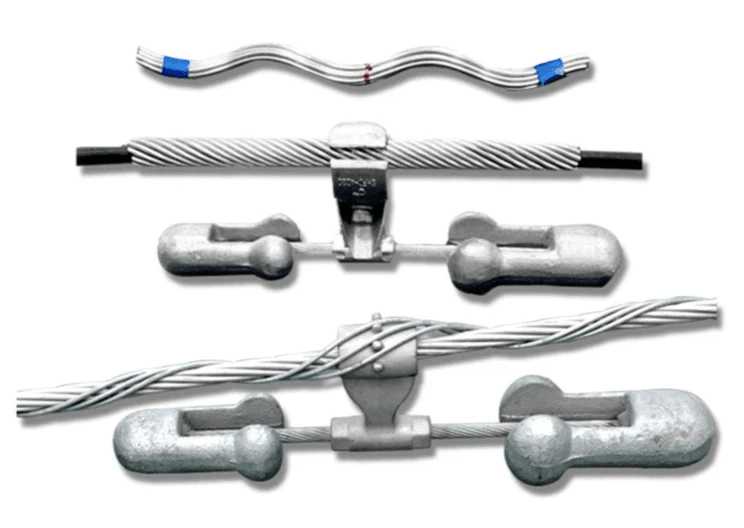Introduction

In the world of modern engineering, helical products have become essential components for ensuring the reliability and efficiency of various systems. Helical fittings, in particular, offer unique advantages that make them a preferred choice for many applications, especially in the realm of telecommunications and power transmission. Understanding these innovative metal fittings is crucial for anyone looking to enhance their infrastructure with durable and effective solutions.
Understanding Helical Fittings
Helical fittings are specialized metal components designed to provide superior support and stability in various applications. These fittings utilize a unique spiral design that allows them to grip cables more effectively than traditional options, making them ideal for installations involving ADSS/OPGW fittings. By leveraging the benefits of helical grips wraps, engineers can ensure that their systems are not only secure but also capable of withstanding environmental stresses.
The Role of Helical Dead Ends
These components anchor cables securely while allowing for some movement, which is essential in dynamic environments where thermal expansion or contraction may occur. The strategic use of helical dead ends can significantly improve overall system performance by reducing wear and tear on cables over time.
Why Choose Helical Products
Choosing helical products means investing in quality and longevity for your infrastructure needs. The innovative design features inherent in helical fittings provide enhanced performance compared to conventional metal fitting options, resulting in reduced maintenance costs over time. Furthermore, as industries continue to evolve towards more efficient technologies, incorporating helical grips wraps into your projects ensures you stay ahead of the curve while maximizing operational effectiveness.
What Are Helical Fittings?

Helical fittings are innovative metal fittings designed to enhance the performance and reliability of various cable systems. These products utilize a unique helical design that provides superior grip and stability, making them essential in applications like ADSS (All-Dielectric Self-Supporting) and OPGW (Optical Ground Wire) fittings. Their versatility and efficiency have made them a popular choice among engineers and contractors alike.
Overview of Metal Fitting Types
When it comes to metal fittings, there’s a smorgasbord of options available, but helical products stand out due to their distinctive design and functionality. Traditional metal fittings can range from clamps to connectors, each serving specific purposes in electrical or telecommunications systems. However, helical fittings bring an added layer of innovation with their spiral form, which allows for easier installation while providing robust support for cables.
Applications of Helical Fittings
Helical fittings find their niche in various industries, particularly in telecommunications and power distribution sectors where reliability is paramount. Their primary use is in ADSS/OPGW fittings, where they secure cables against environmental stressors like wind or ice load. Additionally, these versatile products are employed in construction projects requiring durable cable management solutions that can withstand harsh conditions.
Benefits of Using Helical Products
The advantages of incorporating helical products into your fitting solutions are numerous and compelling. First off, they offer enhanced stability for cables due to their unique gripping mechanism; this means less worry about slippage or failure over time. Furthermore, the ease of installation associated with helical grips wraps translates into reduced labor costs and quicker project timelines—who doesn’t love saving time and money? Lastly, the long-term cost efficiency provided by these durable metal fittings makes them an investment worth considering for any serious project manager.
Helical Dead Ends Explained

Helical dead ends are a crucial component in the world of helical products, particularly when it comes to ensuring the stability and reliability of cable systems. These fittings are designed to anchor and terminate cables effectively, providing secure support for various applications. Understanding their definition and purpose is essential for anyone working with metal fittings in transmission systems.
Definition and Purpose
At its core, a helical dead end serves as a termination point for cables, especially in overhead line applications like ADSS (All-Dielectric Self-Supporting) and OPGW (Optical Ground Wire) fittings. Their primary purpose is to absorb tension loads while minimizing stress on the cable itself, preventing potential damage during operation. By utilizing helical grips wraps, these fittings ensure that the cables remain securely fastened while allowing for some flexibility to accommodate environmental factors.
How They Work in ADSS and OPGW Fittings
In both ADSS and OPGW fittings, helical dead ends play a pivotal role in maintaining structural integrity under various conditions. When installed correctly, these metal fittings distribute tension evenly across the cable, reducing localized stress points that could lead to failures over time. The innovative design of helical grips wraps allows them to adapt seamlessly within these systems, enhancing performance by providing additional support without compromising on flexibility.
Real-World Applications
Helical dead ends find their way into numerous real-world applications across different industries, highlighting their versatility as part of helical products. From telecommunications to power distribution networks, they are essential for securing overhead cables against wind loads or ice accumulation. Their ability to provide reliable anchoring solutions makes them indispensable in ensuring uninterrupted service delivery while extending the lifespan of cable infrastructure.
Spark Fittings and Helical Solutions

In the world of metal fittings, spark fittings have emerged as a crucial innovation, particularly when paired with helical products. These specialized fittings are designed to enhance the performance of cables in various applications, including ADSS (All-Dielectric Self-Supporting) and OPGW (Optical Ground Wire) systems. By integrating spark fittings with helical grips wraps, engineers can achieve improved stability and reliability in transmission systems.
Introduction to Spark Fittings
Spark fittings serve as a vital component in modern electrical and communication infrastructures. They are engineered to provide secure connections while minimizing the risk of sparking or electrical discharge, which can lead to system failures. When combined with helical products, these metal fittings offer enhanced durability and performance that is essential for long-term operational success.
Innovations in Helical Grips Wraps
The development of helical grips wraps marks a significant advancement in the realm of cable management solutions. These wraps not only secure cables but also distribute tension evenly across the length of the installation, reducing wear and tear on both cables and fittings. Innovations in these helical grips wraps ensure that they can withstand harsh environmental conditions while maintaining their effectiveness in supporting ADSS/OPGW fittings.
The Impact on Transmission Systems
The integration of spark fittings with helical products has transformed transmission systems by providing greater resilience against mechanical stress and environmental challenges. By utilizing advanced materials and designs, these solutions enhance overall system integrity while reducing maintenance costs over time. As industries continue to evolve toward more efficient electrical networks, the role of innovative metal fitting solutions like spark fittings and helical grips wraps will undoubtedly become more prominent.
Advantages of Helical Grips Wraps

When it comes to enhancing the performance of cables, helical grips wraps stand out as a game-changer in the world of helical products. These innovative solutions provide numerous advantages that make them an essential choice for various applications, particularly in ADSS and OPGW fittings. By combining stability, efficiency, and cost-effectiveness, helical grips wraps are transforming the landscape of metal fittings.
Enhanced Stability for Cables
One of the primary benefits of using helical grips wraps is their ability to provide enhanced stability for cables. This stability is crucial when dealing with dynamic environments where movement or tension can compromise cable integrity. With their unique design and distribution of forces, these helical products ensure that cables remain securely anchored, reducing the risk of damage or failure.
Moreover, this stability translates into improved performance overall—cables fitted with helical grips wraps experience less wear over time. This means fewer maintenance interventions and repairs are needed in the long run. In high-stakes applications like telecommunications and power transmission, such reliability is invaluable.
Reduced Installation Time
Another significant advantage of helical grips wraps is their ability to reduce installation time considerably. Traditional metal fitting methods often require extensive preparation and multiple components to achieve a secure connection. However, with helical fittings like grips wraps, installation becomes a streamlined process that can be completed quickly and efficiently.
This reduction in installation time not only speeds up project timelines but also minimizes labor costs associated with lengthy installations. In industries where time is money—such as construction or utility services—this benefit cannot be overstated. Faster installations mean quicker project completions and more satisfied clients.
Long-Term Cost Efficiency
Investing in high-quality helical products like grips wraps leads to long-term cost efficiency that savvy businesses can't ignore. While the initial purchase price may be slightly higher than traditional metal fittings, the durability and reduced maintenance needs pay dividends over time. Fewer replacements mean fewer interruptions in service and lower operational costs overall.
Additionally, improved cable performance translates into better energy efficiency for transmission systems utilizing ADSS/OPGW fittings equipped with these innovative solutions. As businesses increasingly seek ways to optimize budgets while maintaining quality standards, embracing helical grips wraps makes financial sense—and cents!
Choosing the Right Helical Fittings

Selecting the right helical fittings can feel like finding a needle in a haystack, especially with the myriad options available. To make an informed choice, it’s crucial to understand the specific requirements of your project and how different metal fittings can meet those needs. Whether you're working with ADSS/OPGW fittings or exploring helical grips wraps, knowing what to look for will save you time and resources.
Key Factors to Consider
When choosing helical products, several key factors come into play that can significantly affect performance. First, consider the environment where the fittings will be installed; factors such as temperature fluctuations, humidity levels, and exposure to corrosive elements can influence material selection. Additionally, load capacity is essential; ensure that your chosen metal fitting can handle the anticipated stress without compromising integrity.
Another factor is compatibility with existing infrastructure; not all helical fittings are universally applicable. Ensure that your selected products align with any existing systems or components in use. Finally, evaluate the installation process—some helical grips wraps are designed for quick application while others may require specialized tools or skills.
Comparing Different Metal Fitting Options
The market offers a variety of metal fitting options tailored for different applications and environments. When comparing these options, take note of their materials—aluminum and stainless steel are common choices due to their durability and resistance to corrosion. Each type has its own set of advantages; for instance, aluminum is lightweight but may not offer the same strength as stainless steel under certain conditions.
In addition to material considerations, look at design features such as ease of installation and maintenance requirements. Some helical products come equipped with innovative designs that allow for faster installation without sacrificing stability or performance. By comparing these attributes across various metal fittings, you can make a more educated decision tailored to your specific needs.
Expert Tips for Optimal Selection
To ensure you select the best helical fittings for your project, consult industry standards and guidelines relevant to ADSS/OPGW fittings. These documents often provide valuable insights into load ratings and application-specific recommendations that could save you from costly mistakes down the line. Moreover, don't hesitate to reach out to manufacturers or suppliers who specialize in helix technology—they often have extensive knowledge about their products' capabilities.
It’s also wise to consider future scalability when making your choice; opting for versatile helical grips wraps might serve you better if expansion is on your horizon. Lastly, always prioritize quality over cost—while cheaper options may seem appealing initially, investing in high-quality metal fittings will pay dividends through enhanced durability and reduced maintenance needs over time.
Conclusion
In wrapping up our exploration of helical products, it’s clear that Helical Fittings play a pivotal role in enhancing the performance and reliability of various applications, particularly in the realm of ADSS/OPGW Fittings. These innovative metal fittings are not just about connecting cables; they embody a blend of engineering excellence and practical benefits. As we move forward, understanding these components will empower users to make informed choices that enhance their systems’ efficiency.
Key Takeaways About Helical Fittings
Helical fittings offer a unique solution for securing cables while reducing stress on the infrastructure they support. The versatility of helical products means they can be used across multiple industries, ensuring that whether it's telecommunications or power transmission, there is a fitting tailored for every need. Additionally, the incorporation of helical grips wraps enhances stability and minimizes installation time, making them an attractive option for modern projects.
The Importance of Quality in Metal Fitting
High-quality materials ensure durability and longevity, which are essential for maintaining system integrity under varying environmental conditions. Investing in superior Helical Fittings not only improves performance but also reduces maintenance costs over time—an essential consideration for any project manager or engineer.
Future Trends in Helical Products
Looking ahead, the future of helical products appears bright with continuous innovations on the horizon. Advances in materials science may lead to even more robust and lightweight options for Helical Fittings that further enhance their applications in ADSS/OPGW fittings systems. Moreover, as industries become increasingly focused on sustainability, we may see eco-friendly alternatives emerging within this space—ensuring that while we connect our world through technology, we also care for our planet.

